-
Posts
6,065 -
Joined
-
Last visited
-
Days Won
63
Content Type
Links Directory
Profiles
Articles
Forums
Downloads
Store
Gallery
Blogs
Events
Classifieds
Posts posted by RobertKB
-
-
I wouldn’t be tapping holes unless you know exactly what they are. If you use a wrong tap, which initially seemed ok, you can break it in the hole and you are basically screwed.
-
 1
1
-
-
3 hours ago, Sam Buchanan said:
Marc, go to a parts or hardware store and buy 1/8", 1/4" and 3/8" NPT plugs and keep them in your shop for "gauges". That way you can skip the parts book and internet back-and-forth and know instantly the size of the threads.
Totally agree!!
It’s always good to have a healthy supply of various bolts, plugs, nuts, etc. I never throw away any of those items but put them in a can, or in my case cans. In the last 30 years there have only been a couple of times I couldn’t find what I needed, even specialty items. Mind you, I’ve been pulling old Mopar stuff apart for years.
-
Use leather boots. It can actually be done with the driveshaft on the car although easier on a bench. Well known Mopar suppliers sell them.
-
 1
1
-
-
1 hour ago, Happy 46R said:
Unfortunately my acquisition isn't quite as nice as yours but I will document it's dissection and rebuild carefully. Thank you everyone for your feedback.
Dave
Mine didn’t look as nice when I got it but it was a low miler with 2-3,000 miles. A good clean and silver paint works wonders. It ran beautifully!Good luck with your project!
-
 1
1
-
-
This from a Canadian parts book so 25” for sure. Definitely a former truck engine. Block was obviously bored. My guess is the crankshaft was terrible so a new one was used, hence the standard mains and rods.
Remanufactured Chrysler Method tells you it was done by a rebuilder that was Chrysler approved.
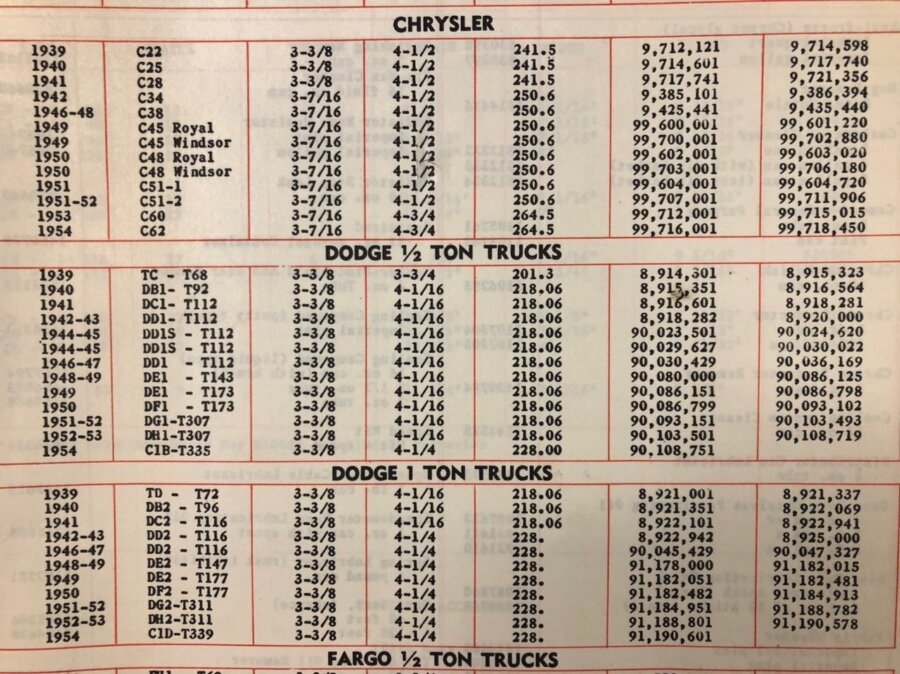
I had a similar tag on the engine in a ‘38 Chrysler I have since sold and for which I now have seller’s remorse. It was also a former truck engine but a T311 so originally a 228 CID.
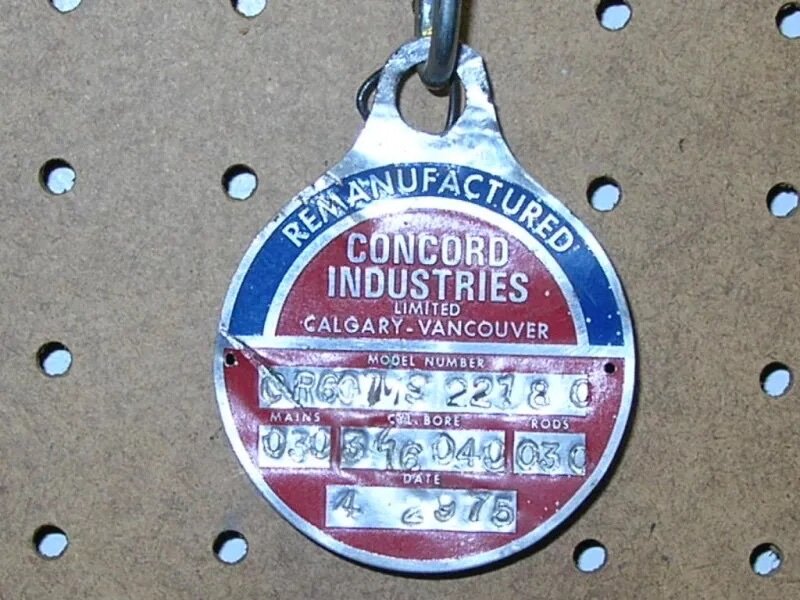
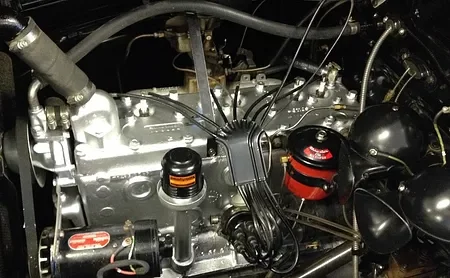
-
 1
1
-
-
I had the radiator in my ‘51 Dodge D39 business coupe recored recently by a local shop who like working on the old radiators. $CDN500 or around $US400. Being charged $1200 for a recore is highway robbery.
Your old radiator may be able to be repaired if it checks out OK. I’ve gone that route with other old radiators.
-
I have three great old Mopars but I also own a 1963 Ford Fairlane 500.
I’ve owned this car since 1979. It was once a daily driver but became a keeper. Motor was getting tired and I had the original 260 V8 rebuilt nearly two years ago. Yes, those are the right engine colours for the year. Ford engine blue arrived a few years later. Radiator was recored and the leaky transmission checked over and all new gaskets.
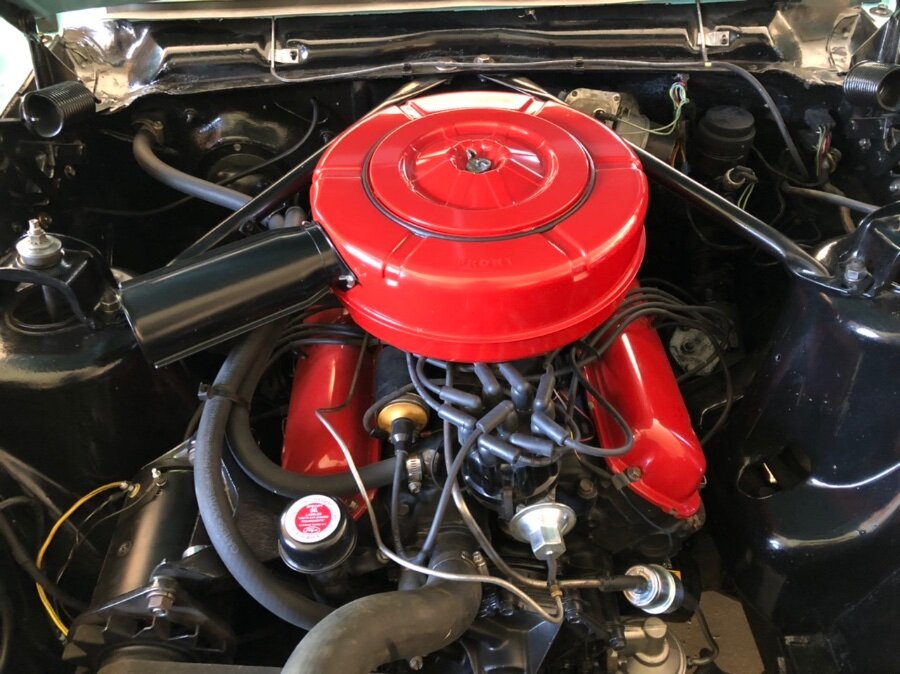
Seats were always a bit shabby and had after-market solid blue seat covers for years. This last winter I sent off the original covers to SMS in Oregon and they made new ones same as the originals. Took a while but they did nice work. My local upholsterer put them over the original frames with new padding. I got them in the car last Friday.
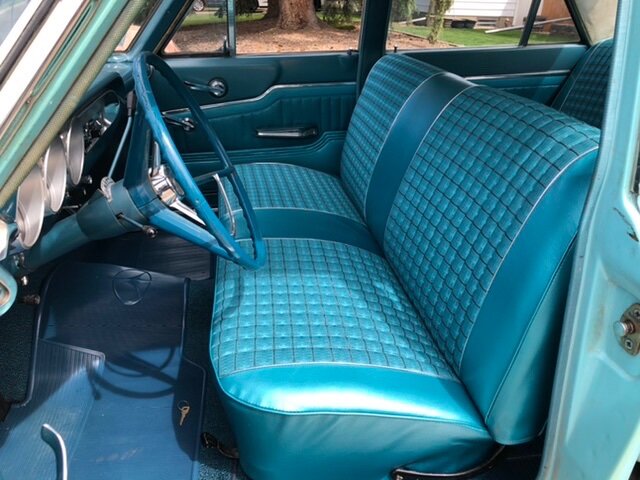
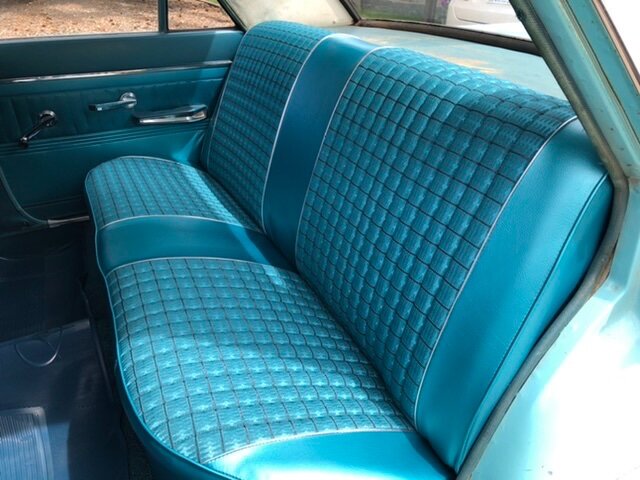
Been driving it lots!!
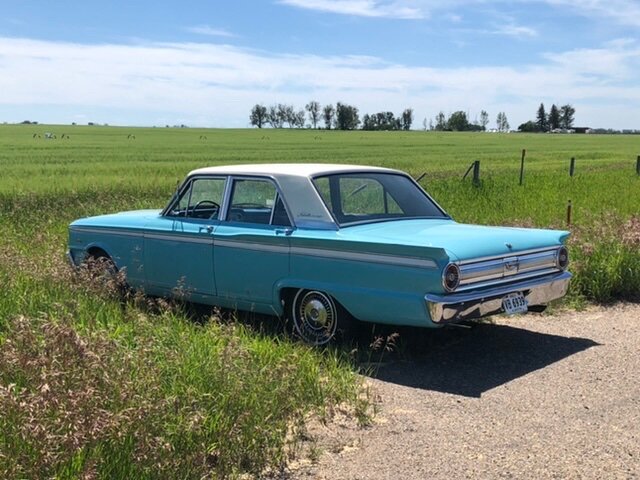
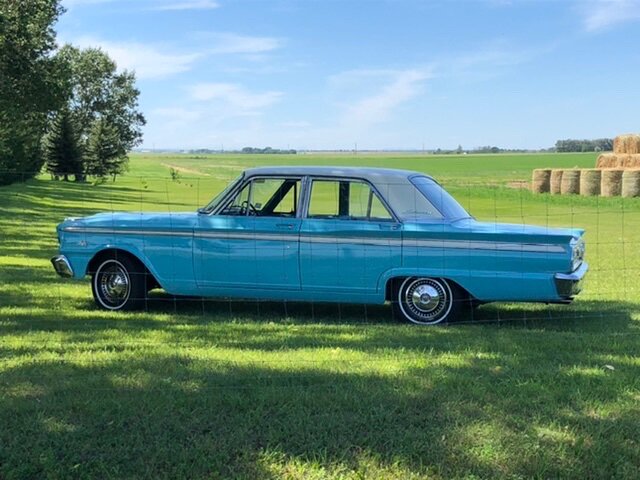
One of my favourite views.
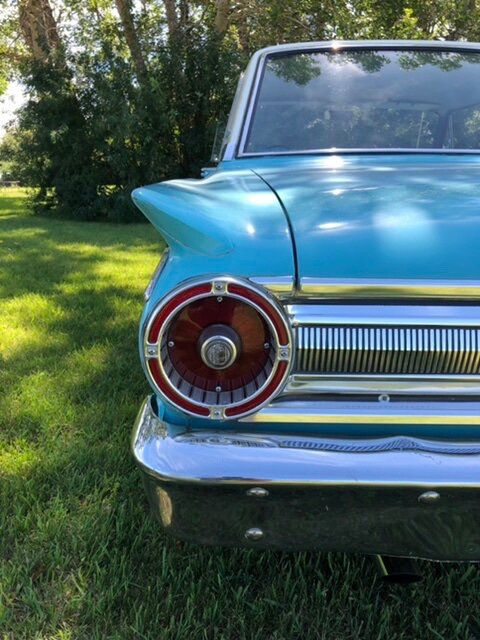
-
 9
9
-
-
That was your original plan in your very first post.
I personally don’t like any fuel filter close to the exhaust manifold.
Did you check for your missing fuel line in the same location you found your missing oil pressure gauge line?
-
 1
1
-
-
dpollo beat me to the right answer. The above picture is exactly right. Have fun with the project!
-
There are no dumb questions, just dumb mistakes due to not asking questions. Now you know how and can pass on that info if needed.
Thanks for the update of the successful replacement. A lot of times original posters don’t show appreciation or provide follow up.
-
19 hours ago, MarcDeSoto said:
I just found out that the 5/16 line that screws into the carburetor does not screw in the fuel pump. What's going on there? Do you have to use reduction fittings to get it to fit? I just looked up the fuel pump to carburetor tube in the Parts Manual. The tube is 26" long with 5/16 fittings. My fuel pump can not take a 5/16 fitting.
You should be able to see what’s needed.
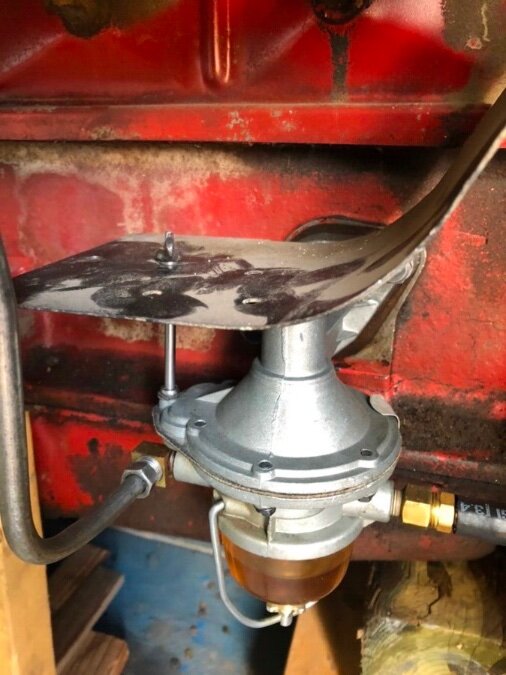
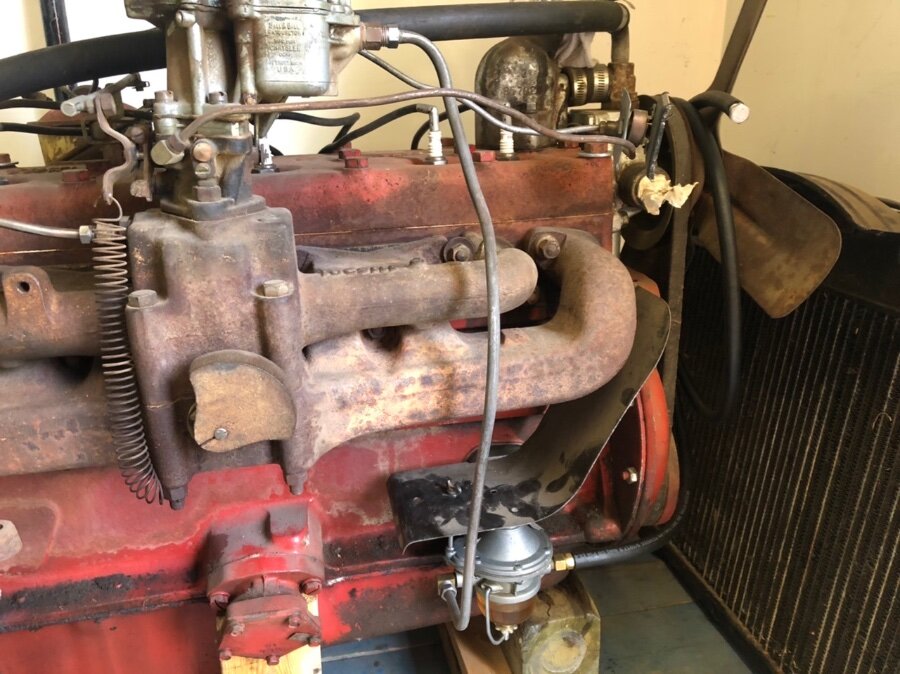
-
 2
2
-
-
It’s a disease! ?
-
Why even think about re-inventing the wheel. Chrysler made tens of millions of these engines. If there was a problem, which I doubt, Chrysler would have made alterations.
My ‘53 Plymouth has 102,000+ miles. It had rings, one burnt valve replaced, and the rest lapped 30,000 miles ago. Main and rod bearings were plastique gauged at the time and were in the middle of factory specs so were re-used. The bearings, camshaft, pistons are all original. Only things replaced were the rings. To this day the car does not burn oil, has great compression, and great oil pressure.
Just saying, don’t over-think things and have faith in the great engineers who designed these engines.
-
First, glad the baby’s well as that’s most important! Boy or girl?
Second, nice to see the Meadowbrook back in the land of the living.
-
 1
1
-
-
For the amount of miles you’ll put on the car, go with what’s easy to get and reasonably priced. With modern oils almost any rings will most likely do 100,000+ miles easily. No need to overthink things.
-
 2
2
-
-
Have the eBay one checked first. Seller may say it needs a recore but then again maybe not.
-
 1
1
-
-
This doesn’t help Marc but just an observation. In Canada since mid 1938, all cars had the longer 25” engine. It not only makes finding an engine, if needed, easy but radiators are pretty much a universal fit between Mopar brands. I ran a radiator in my ‘48 Dodge coupe for years from a Chrysler. When it finally gave up the ghost I put in a great radiator from a Plymouth. Both bolted right in. I am running a 251 CID in the Dodge from an old grain truck and both radiators have cooled well.
-
 2
2
-
-
In your first picture it looks like there’s a parts number on the back of the radiator, top right.
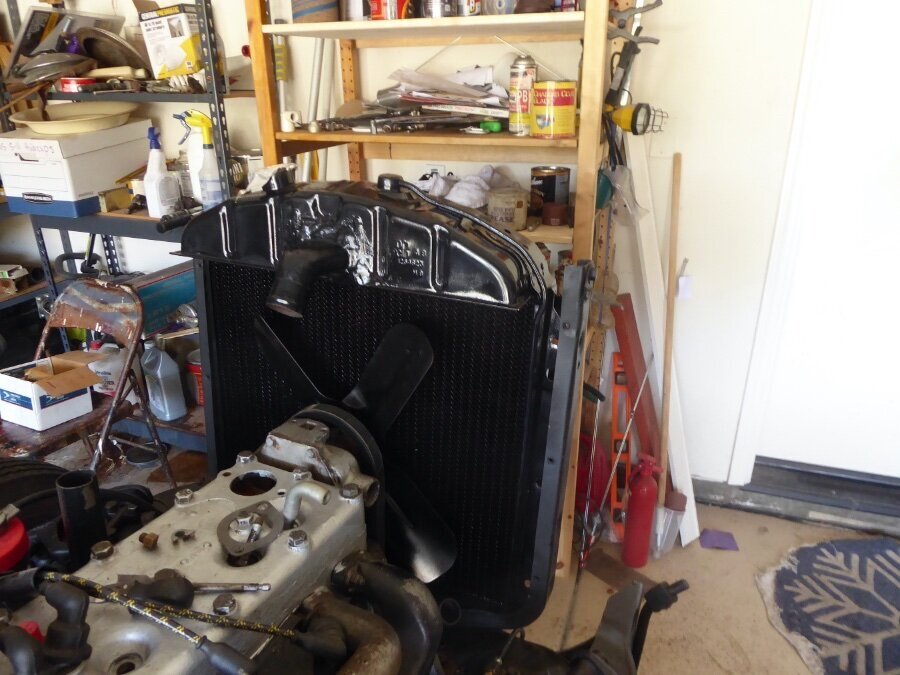
-
 1
1
-
-
If you don’t have the ability or tools needed, a decent radiator shop will run solder around that in a matter of minutes.
-
 1
1
-
-
Nope, runs all summer!?
-
Took the ‘48 Dodge D25 Club Coupe to the car wash. A bit difficult getting in and out but car is clean!?
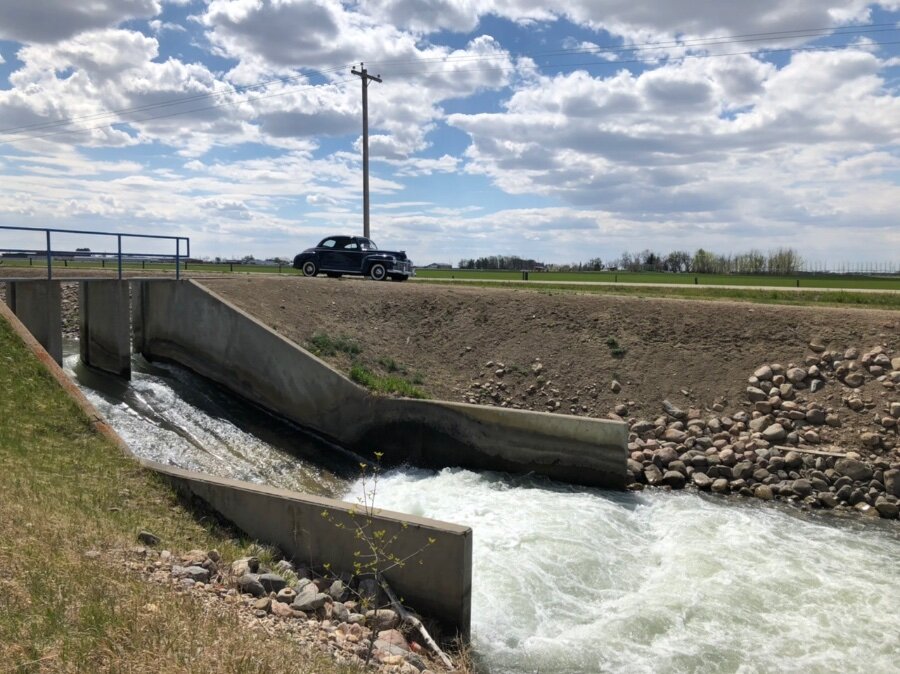
-
 2
2
-
 1
1
-
-
2 hours ago, busycoupe said:
According to allpar.com Chrysler assembled Chryslers and Plymouths in Antwerp Belgium from 1926 to 1958. It seems likely that this car that was bought in Belgium was made there.
Very interesting. I had no idea. -
Definitely a 1954 Dodge but the serial number does not match anything in my Canadian parts manual that also contains the serial numbers of all cars built in Canada. Also, I have never seen a firewall tag like that. My guess is it was specifically built either in Canada or the US for the export market so different tag and numbers. If US built it will have the shorter 23” engine and if built in Canada, it will have the longer 25” engine.
-
Modern iron for me as well. I have three old Mopars with flatties but also this ‘63 Ford ?Fairlane 500. Just had the 260 V8 rebuilt. Non-Mopar but still a sweet car.
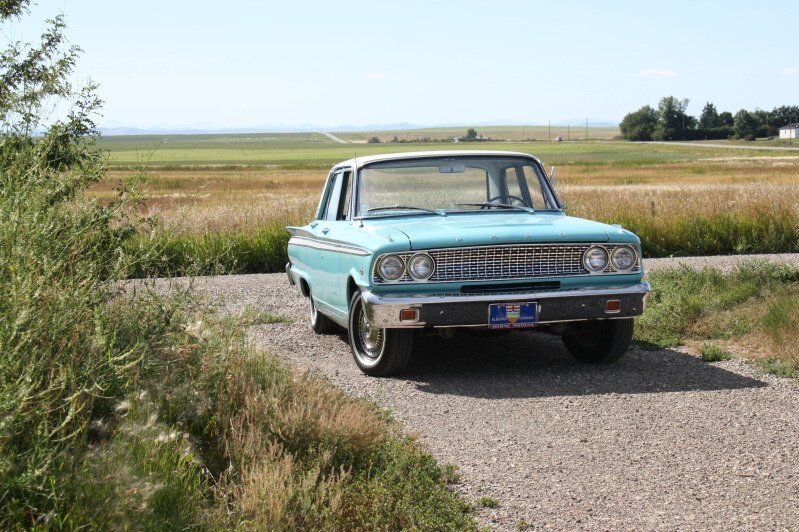
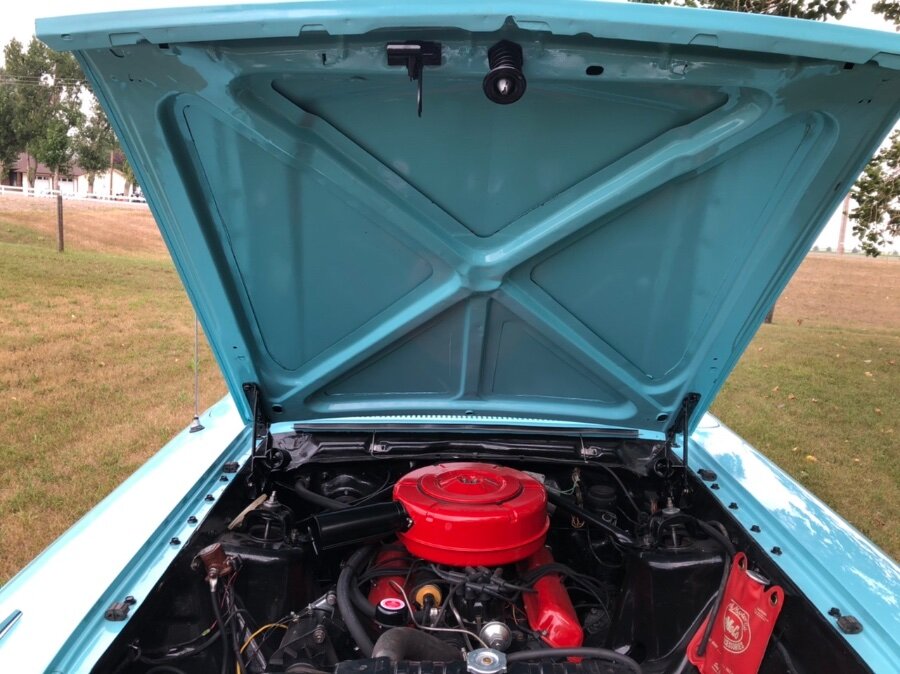
-
 3
3
-


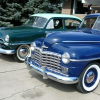
Cleaning underside - about to lift body
in P15-D24 Forum
Posted
You need to be very careful. With soft uneven ground you do not want to lose control of the engine hoist. Unless very firmly positioned they can be tippy or move easily, even on thick plywood. If it tips with you close by, serious injury could result. 600+ pounds of engine can be very dangerous. This is also true if you use the truck bed for the hoist.